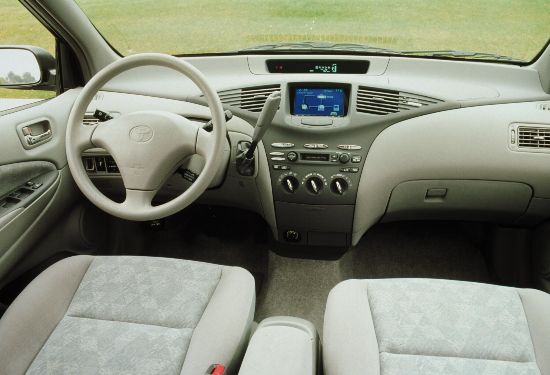It seems like the Toyota Prius has been zipping around our roads forever, but in reality the first examples only hit U.S. soil just over a decade ago, with the Japanese market getting the car a few years before that.
The premise remains the same--a mass-market hybrid vehicle that offers the best economy and lowest emissions on the market--but much has changed since the Prius hit the roads back in 2001.
To see how the cars differ, we're taking a look at the facts and figures, comparing the 2012 Toyota Prius, with its predecessor from a decade ago.
Want more information on the 2012 Toyota Prius? Check out our ultimate guide.
Design
Okay, so this is one area where it's harder to compare bare figures, as design is very much a subjective topic. However, there have still been significant changes in the past ten years.
The first is that the Prius has grown. The first generation sold in the U.S, the NWH11, was in the compact car class, and used an upright, narrow sedan bodystyle. From the 2004 model year, increased interior volume allowed the car to be classified as mid-size, but the body also grew by six inches in length.
The current Prius is closer to the second-generation than the original car, but continues the trend of increased interior room and a larger body. In particular, the trunk offers 10 cubic feet more space than the less practical early cars.
In purely subjective terms, styling has moved on significantly in the past decade too, and the Prius is now a much more distinctive, futuristic car. For those not wishing to stand out too much, the more anonymous, early car may be preferable...
Engineering
Aside from the transformation from sedan to liftback and the increase in size, there's been plenty of work over the past decade transforming the Prius into what it is today.
The body may look different and the car may be larger, but the shape is more aerodynamic. The early Prius had a drag coefficient of 0.29--around the same as that of the contemporary Toyota Echo. Nowadays, a Prius slips through the air with a drag coefficient of 0.25, the same as Honda's original Insight - without requiring the Insight's covered rear wheel arches.
There have been changes under the hood, too. Engine size remained static until the 2010 Prius, at 1.5-liters. An increase to 1.8-liters actually helped fuel efficiency, as the greater torque means the engine now has to work less hard to achieve the same results. Combined horsepower in the original was only 76 hp, a figure that's now risen to 134 hp to meet modern expectations of performance. All Prius models have put their power through a continuously-variable transmission.
The increase in size has also brought about an increase in curb weight, rising from 2,765 lbs to over 3,000 lbs, but increases in safety and equipment make it an acceptable increase.
2011 Toyota Prius
This is perhaps one of the biggest changes. While emissions have improved continually for the last few decades, fuel efficiency remained static for quite some time, as cars got bigger and heavier. Only recently has this trend reversed.
The Prius has always put fuel efficiency as a priority, and the difference between the first and third-generation cars is stark.
Using current EPA testing methods, a 2002 Prius is rated at 42 mpg city, 41 highway, and 41 combined.
It's worth pointing out that those figures still make the Prius more fuel-efficient than many cars on sale today, highlighting the benefits of an aerodynamic shape and hybrid drivetrain--but it still lags behind the 2012 model. With 51 mpg city, 48 highway and a combined figure of 50 miles per gallon, the Prius sips less fuel than ever, despite the greater performance.

2001 Toyota Prius interior
Conclusion
New car is better than old one--"what a shocker!", you're thinking.
However, this comparison isn't to decide which is the better car, more to illustrate the sort of progress that's ongoing within the auto industry, and how even the cleanest of cars still have room for improvement in virtually every area.
It also serves to show the debt of gratitude we owe the original car, for being one of two cars--the other being Honda's first-generation Insight--that really got the ball rolling for hybrid vehicles, a market that now has almost fifty entries.
Perhaps the best news is that it's now possible to find a used example of the original Prius for as little as $5,000. For that you're getting an icon, a reliable mode of transport, and a car that still shames many modern vehicles in terms of fuel efficiency...
+++++++++++













